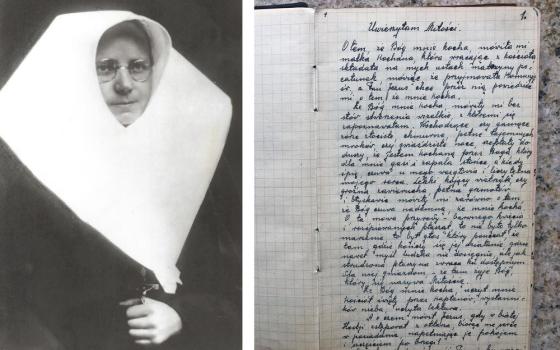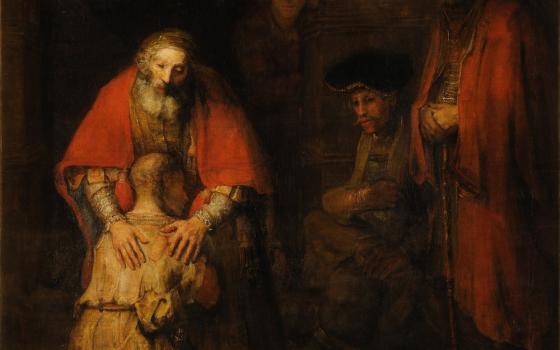
(Unsplash/Patrick Schneider)
The spring season refreshes, revives and reinvigorates the natural world. Remnants of winter snows melt away, streams swell with runoff, days become longer as nights grow shorter, flowers blossom and baby birds fledge.
Is it no wonder that the liturgical season of Easter occurs during the season of spring? The newness of life so lush during these two seasons invites us to reconsider the image of the divine as shepherd presented in this Sunday's responsorial psalm and the Gospel reading of John.
These seasons of new life also invite us to reconsider the theology of sacrifice and the theology of the cross presented in the second reading from 1 Peter and embedded in the Christian tradition.
It is time to press the "refresh" button on these three topics.
The image of the divine as a good shepherd in Psalm 23 and John 10:1-10 is a beloved one. But as beloved as the image of shepherd and sheep is among biblical readers, the metaphors are problematic. Comparing the divine to a shepherd and people to sheep sets up a hierarchical relationship between humans and the divine and reduces the intelligence of humans who, if like sheep, will always be dependent, subservient and deprived of full agency.
Heard in the context of the Roman Catholic Church today, where bishops and other Vatican officials view themselves as "shepherds," the reading supports their efforts and expectations to have people follow them unreservedly.
Hence, new images for the human-divine relationship need to come to the fore. Of note, the Gospel reading reflects a pre-Resurrection time, whereas the Lukan narrative that describes the walk to Emmaus, featuring Christ walking with the two people on the road, is a post-Resurrection narrative. We are post-Resurrection, and even post-Pentecost people.
The second reading, 1 Peter 3:20b-25, depicts Peter preaching to the early Christians and expounding on the suffering endured by Christ, to the point of crucifixion. Peter the preacher affirms Christ's suffering, connects it to the call and mission of being a Christian, encourages people to suffer as Christ suffered, and challenges people to follow in Christ's footsteps.
Christianity has long maintained that Christ's suffering is vicarious, that Jesus was a substitution who was punished to pay for humanity's sins and reconcile humanity to God. The cross, then, becomes the ultimate sacrifice for atonement.
The message preached by Peter and read during the Easter season in not good news. Embedded in Peter's understanding of suffering and the cross is the inherent support for violence.
Advertisement
Christ's crucifixion understood as vicarious suffering is nothing to be celebrated and certainly not to be "spiritualized." The Roman occupying power is inscribed into the divine story of salvation that then idealizes the victim of a totalitarian regime. The victim's suffering is then interpreted by Peter the preacher as a sacrifice of salvation.
This preaching is re-inscribed into the minds and beliefs of preachers throughout the centuries who, in turn, preach this reality as if it is good news and the fulfillment of the Christian vocation. Guilty parties responsible for the crucifixion of an innocent person are not held accountable, and the acceptance of this suffering, now looked upon as a redemptive act, normalizes violence and encourages the acceptance of structures and attitudes that create victims. These structures and attitudes continue to exist and go unchecked and uncriticized.
The seasons of spring and Easter invite us to become liberated from toxic theology whose spiritual effects anesthetize us to unjust crucifixions happening daily in our world today.
This season of life beckons us to choose life, to do our internal spring cleaning and gardening, to leave no stone unturned, to uproot and root out oppressive religious images theologies, so that room can be made for the Spirit to transform internally and externally our belief systems and their related structures.






